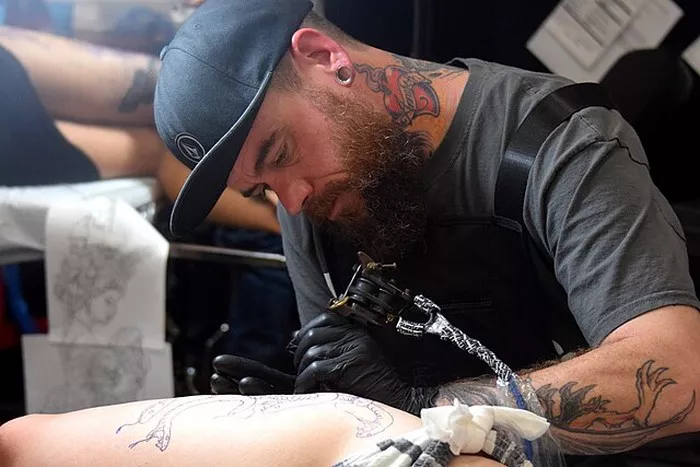Tattoos are not just ink on skin; they are pieces of art that hold personal significance to the individuals who wear them. Tattoo artists are skilled professionals who bring these visions to life, but their work often comes with misconceptions and stereotypes. In the course of their careers, tattoo artists encounter a wide array of clients, each with their own ideas and expectations. However, there are certain things that clients should avoid saying to tattoo artists to ensure a positive and respectful interaction.
Understanding the Importance of Communication
Effective communication between a client and their tattoo artist is crucial for a successful tattooing experience. Clear communication helps the artist understand the client’s vision, preferences, and any concerns they may have. Conversely, inappropriate or offensive comments can create tension and hinder the collaborative process. To maintain a respectful and professional atmosphere, clients should be mindful of their words and approach when interacting with tattoo artists.
Common Misconceptions and Stereotypes
Before delving into what not to say, it’s essential to address some common misconceptions and stereotypes surrounding tattoo artists. These misconceptions often stem from outdated stereotypes or portrayals in the media. Contrary to popular belief, tattoo artists are not all rough rebels with a disregard for societal norms. They are skilled artisans who take their craft seriously and deserve to be treated with respect.
One common stereotype is the assumption that all tattoo artists are heavily tattooed themselves. While many tattoo artists do have tattoos, it’s not a prerequisite for the job. Likewise, assuming that tattoo artists are all part of a counterculture or subculture is unfair and inaccurate. Tattooing is a diverse industry that attracts individuals from various backgrounds and walks of life.
What to Avoid Saying to Tattoo Artists
“Can you just copy this exact design from Pinterest?”
Asking a tattoo artist to replicate a design exactly undermines their creativity and expertise. Tattoo artists are professionals who take pride in their ability to create original artwork. Instead of requesting a carbon copy, clients should trust the artist to interpret their ideas and bring them to life in a unique way.
“I want this tattoo, but I’m not sure where I want it or how big I want it.”
While it’s okay to seek guidance from a tattoo artist, coming to the appointment without a clear idea of placement or size can be frustrating for both parties. Tattoo artists rely on this information to design tattoos that complement the client’s body and flow with its contours. Clients should take the time to consider these factors before the appointment to facilitate the design process.
“I don’t want to pay a lot for this tattoo. Can you give me a discount?”
Negotiating prices with a tattoo artist can be perceived as disrespectful and devalues their time and skill. Tattooing is a labor-intensive process that requires specialized equipment and training. Asking for a discount suggests that the client does not appreciate the value of the artist’s work. Instead of haggling over prices, clients should be prepared to invest in quality workmanship.
“I’m not sure if I really want a tattoo, but I’m here anyway.”
Tattoo artists take their work seriously and prefer to tattoo clients who are committed to the process. Indecisive clients can waste the artist’s time and prevent them from booking appointments with more dedicated clients. Before scheduling a tattoo appointment, clients should take the time to consider whether they are truly ready for the commitment.
“Can you hide this scar/stretch mark with a tattoo?”
While tattoos can effectively cover scars and stretch marks, it’s important to approach this topic sensitively. Asking a tattoo artist to “hide” imperfections implies that they are flaws to be ashamed of rather than natural features of the body. Instead of focusing on concealment, clients should embrace their scars and stretch marks as part of their story and discuss how they can be incorporated into the tattoo design.
“I’ve heard that tattoos are painful. Can you make it hurt less?”
Pain is an inherent part of the tattooing process, and there is no magic solution to make it completely painless. While tattoo artists can take measures to minimize discomfort, such as using numbing creams or adjusting their technique, pain is subjective and varies from person to person. Clients should be prepared for some level of discomfort and trust the artist to prioritize their comfort during the tattooing process.
“Can you tattoo my partner’s/child’s/name on me, even though we just met?”
Tattooing someone’s name on your body is a significant decision that should not be taken lightly. Tattoo artists are often reluctant to tattoo names of partners or loved ones on clients they have just met, as they understand the potential consequences of such impulsive decisions. Clients should take the time to reflect on their motivations for getting a name tattoo and consider the long-term implications before proceeding.
“I want a tattoo, but I’m not sure what I want. Can you just come up with something for me?”
While some clients may trust the artist’s creative judgment, expecting them to design a tattoo without any input can be challenging. Tattoo artists rely on the client’s vision and preferences to create custom designs that resonate with them personally. Clients should come to the appointment with at least some idea of the style, subject matter, or symbolism they want in their tattoo to guide the design process.
Conclusion
Tattoo artists are skilled professionals who deserve to be treated with respect and appreciation for their craft. Effective communication between clients and tattoo artists is essential for a positive and successful tattooing experience. By avoiding insensitive or inappropriate comments and approaching interactions with respect and consideration, clients can foster a collaborative and respectful relationship with their tattoo artist. Remember, behind every tattoo is a story, and it’s essential to honor the artist’s role in bringing that story to life.

